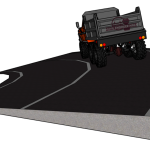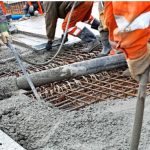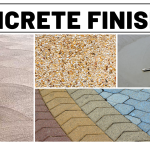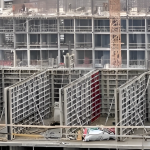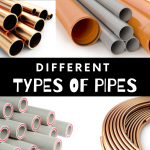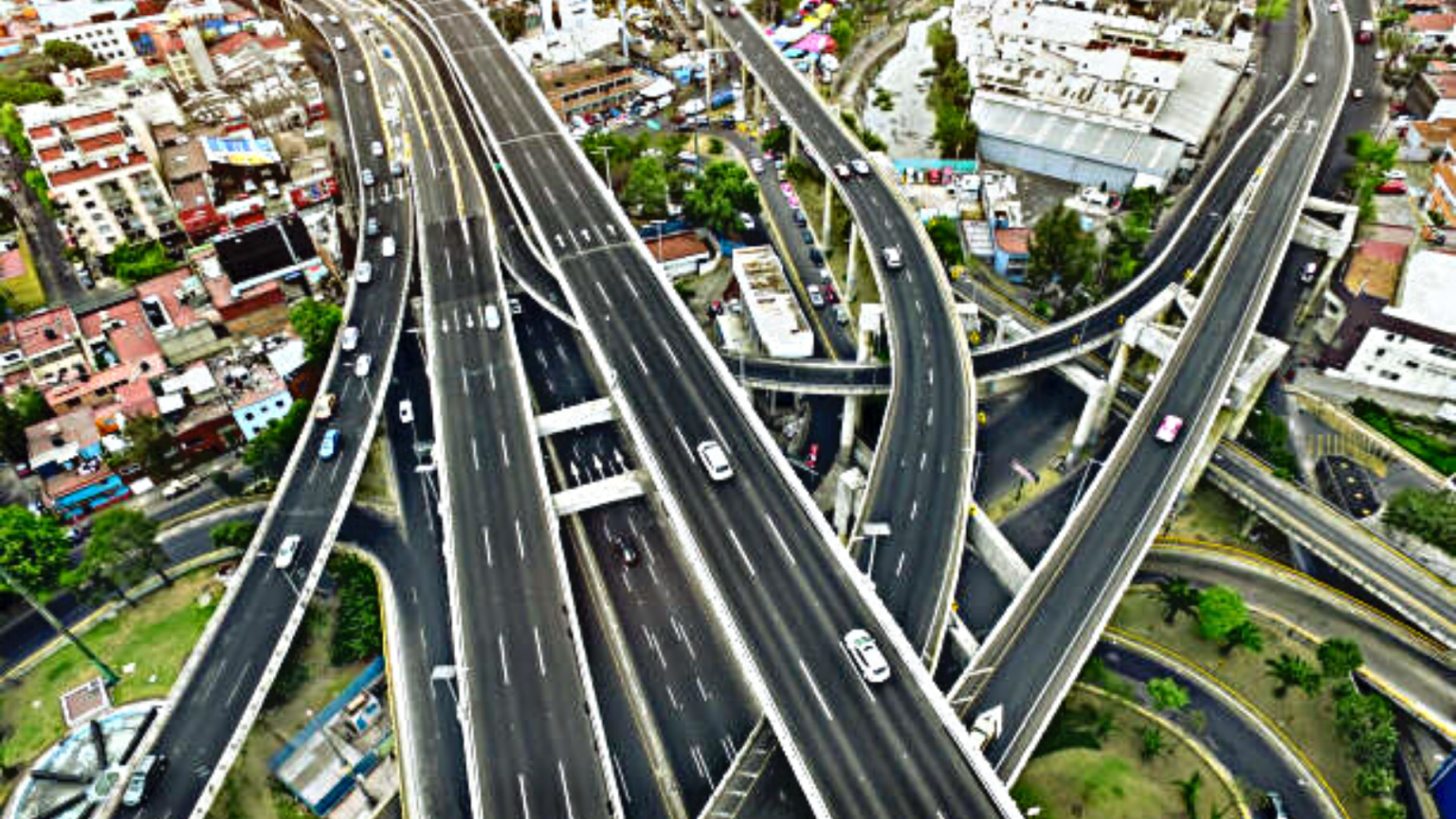
A flyover is built over the road to help with traffic management. It can be built over a railroad or an existing road. Nowadays, the use of these flyovers is a common engineering term in large cities with congested traffic.
What is Flyover?
A flyover is an overpass, which is a high-level road bridge that crosses a highway interchange or intersection. In a structure of this type, one road crosses another.
Flyovers are built to allow passage over an obstacle while not blocking the path below. Perhaps a road, highway, or railroad was needed for the passage.
A bridge and a flyover are different in terms of how they will be used and where they will be built.
Bridges are built to connect two distinct locations; these locations can be found naturally in valleys, rivers, seas, or other bodies of water. Whereas flyovers are built to link two points in congested areas, such as at intersections of roads and highways.
Types of Flyovers
For traffic management, there are two different types of flyovers:
1. Simple Flyovers
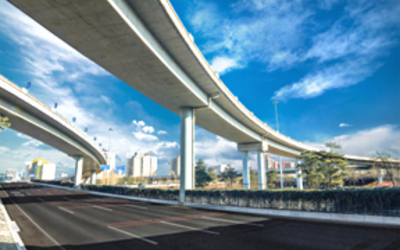
This is the most commonly used flyover. This type of highway is used for fast-moving traffic crossing railroad lines or heavy vehicular intersections.
2. Cloverleaf Flyovers
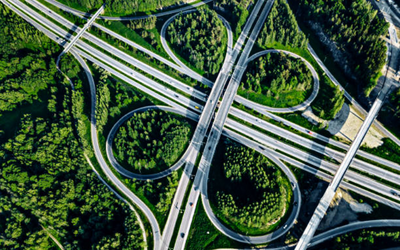
A cloverleaf flyover is also a type of grade separator. The grade separation technique used in this type of flyovers allows traffic from one or more roads to pass through the junction without directly crossing it or interfering with the flow of other traffic streams.
This has an advantage over simple flyovers because there is no need to weave or slow down.
Flyover Classification Based on Form
1. Overpass Flyover

Overpass flyovers are constructed over an existing highway or railway line that crosses obstacles. An overpass flyover’s primary function is to keep other traffic away from the railway path (i.e., vehicle and pedestrian traffic).
2.Underpass Flyover
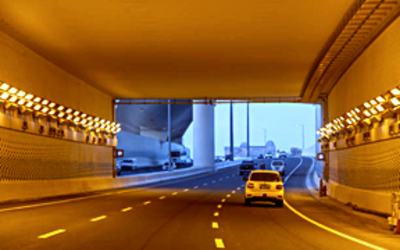
An underpass flyover is one that is constructed by passing through an existing roadway or railway, crossing obstacles below. In general, underpass flyovers are designed to allow pedestrians and vehicles to move without interfering with the railway or roadway. Both of these flyovers contribute to better traffic management, which reduces the number of accidents.
Flyover classification based on material
1. Composite Flyover
A composite flyover is made up of steel and RCC components working together. The combined strength of RCC and steel contributes to the strength of composite flyovers. For short spans up to about 10 m, steel girders can be rolled steel joists (like ISMB, ISWB, or ISHB) or plate girders (built-up beams) for longer spans.
2. Steel Flyover
Steel flyovers are those in which the main structural component of the flyover is made of steel. This type of flyover costs less than composite and concrete flyovers. Due to the fact that it is made of steel, temperature variations can cause problems with expansion and compression, so the steel should be properly galvanized or painted.
3. Concrete Flyover
Concrete is the primary material used to build concrete flyovers with steel. Concrete flyovers are further classified as precast and cast in-situ.
Also, Read: Super Elevation | Rumble Strips | Foam Concrete | Steel Deck Installation and Construction | Concrete Stairs Reinforcement Details
Difference between Flyover and Bridge
The bridge is a horizontally spread structure that supports vertical loads. A flyover is a type of bridge built over a road.
| FLYOVER | BRIDGE |
|---|---|
| A bridge is a structure that allows passage over an obstacle without sealing the way underneath. The required passage could be a road, a railway, a pedestrian path, a canal, or a pipeline. The obstacle to be overcome could be a river, a road, a railway, or a valley. | The term “flyover” refers to a bridge that carries one road or railway line over another, either including or excluding supplementary roads, in order to allow communication between the two. |
| This is used for connection purposes, but it is built above roads as an overpass. | The bridge is constructed to connect two distinct points. |
| They are intended for use with road vehicles. | Bridges are used to carry traffic around obstacles. They are also used to direct pipelines, power lines, and other modes of transportation. |
| They are built over road intersections, roads, streets, and so on. | When there are any obstructions, the bridge is built; it varies in type for seas, rivers, valleys, and so on. |
| It was constructed to alleviate traffic congestion. | The bridge was constructed for short distances and bypasses. |
| They are built over man-made structures such as roads and intersections to prevent crowding and provide a more convenient way to steer traffic. | A bridge is built to reduce transportation costs and time consumption. |
| It is connected to a junction point or “rich point,” like a station point. | The bridge’s length is entirely determined by the distance between the two points. |
| It is constructed in areas with congested roads. | The bridges were mostly built over rivers and valleys. |
Advantages of Flyover
The following are the advantages of a flyover:
- It helps in traffic control.
- It saves people time because there is little chance of heavy traffic.
- Improves pedestrian safety
- It provides more space for emergency services.
Disadvantages of Flyover
The following are the disadvantages of a flyover:
- They are not usually suitable for built-up areas because they require a large area.
- A lack of proper management during the flyover construction process can lead to several issues.
- Losses in the event of an accident are increased. The accident risk is reduced, but if one does happen, the damage will be significant.
- There is a lower chance of survival in accidents because the vehicle is at a high point.
- It is extremely expensive to construct.
- Since it isn’t used by those who can’t risk their lives by relying on it. As a result, it’s ironic that the flyover has become a liability rather than an asset for the city.

